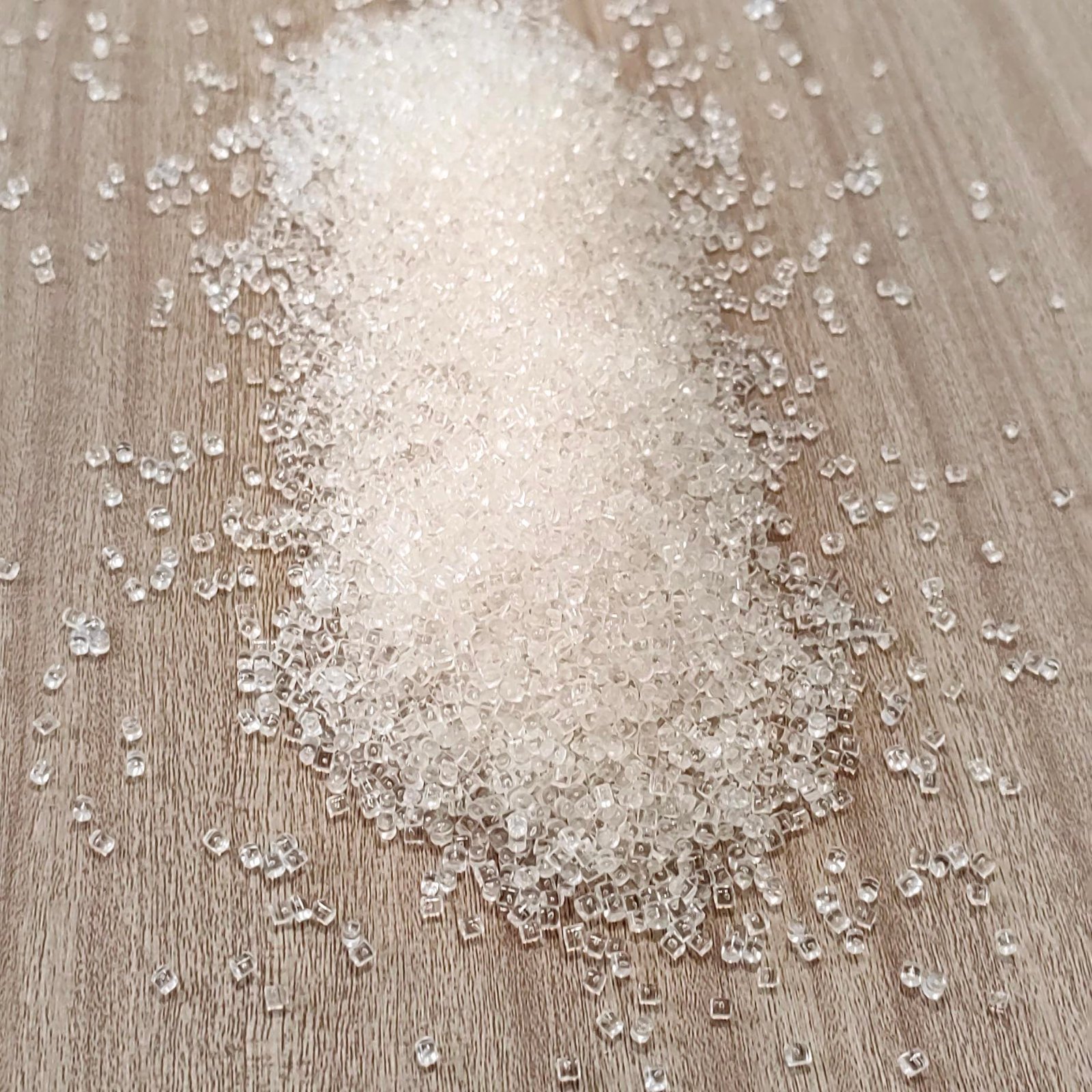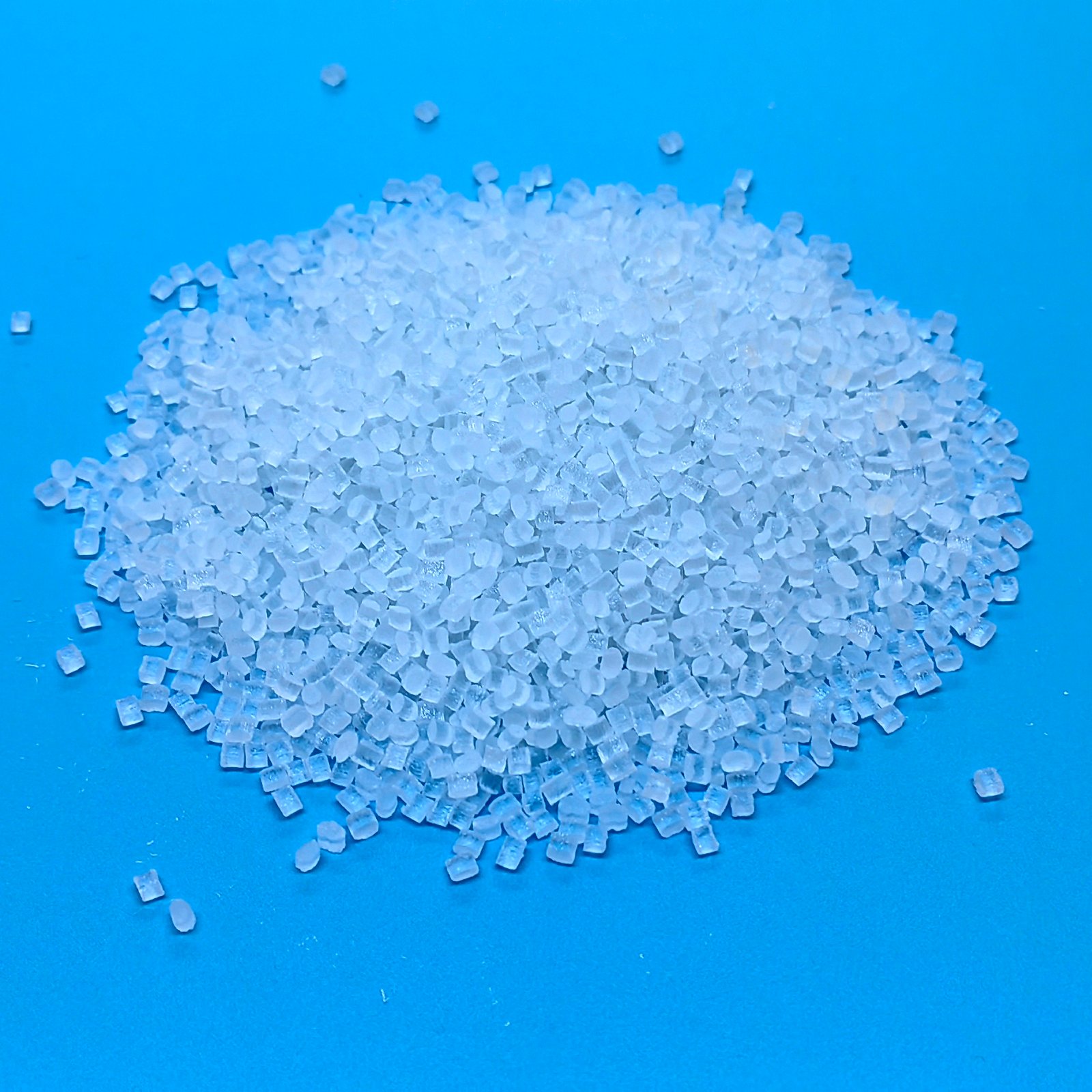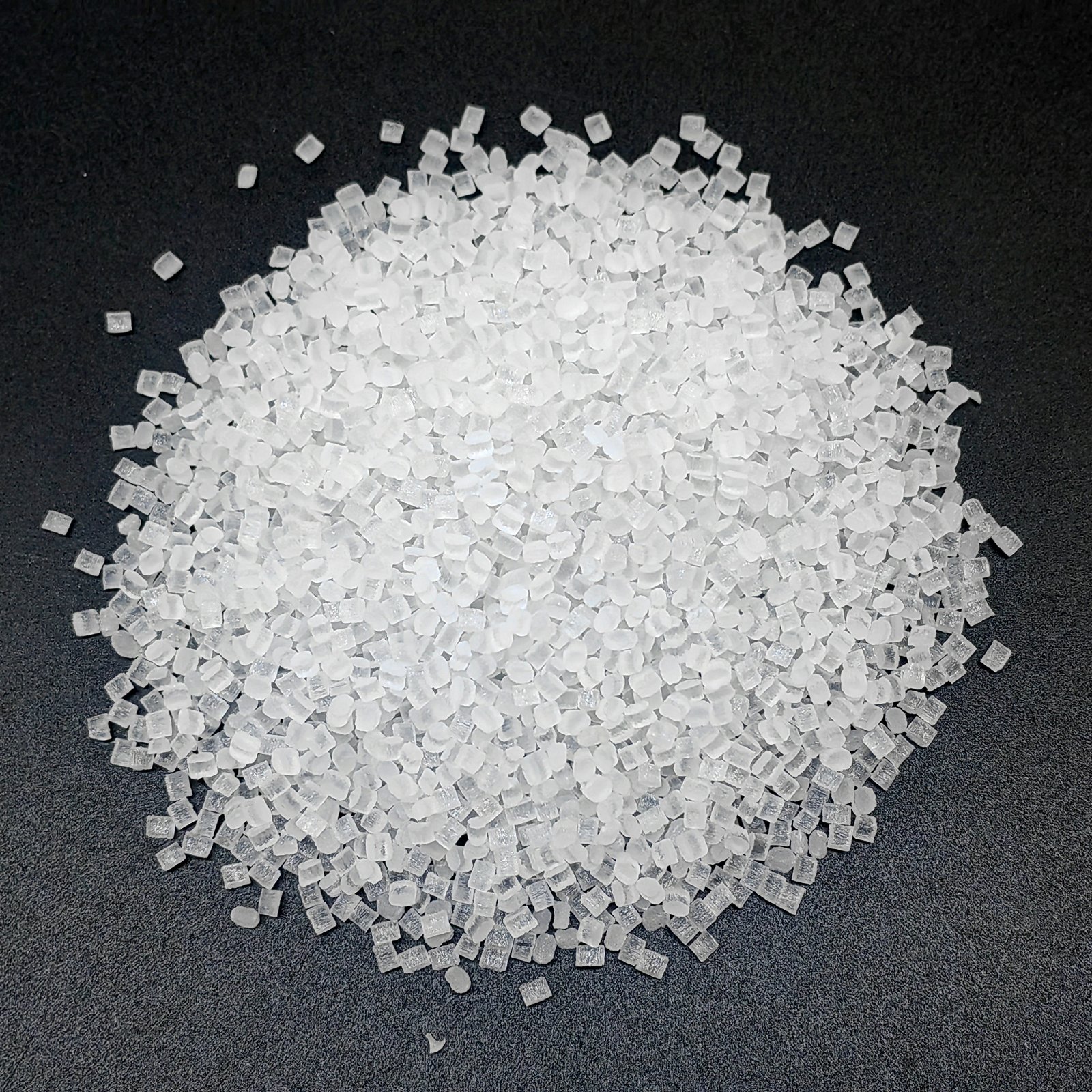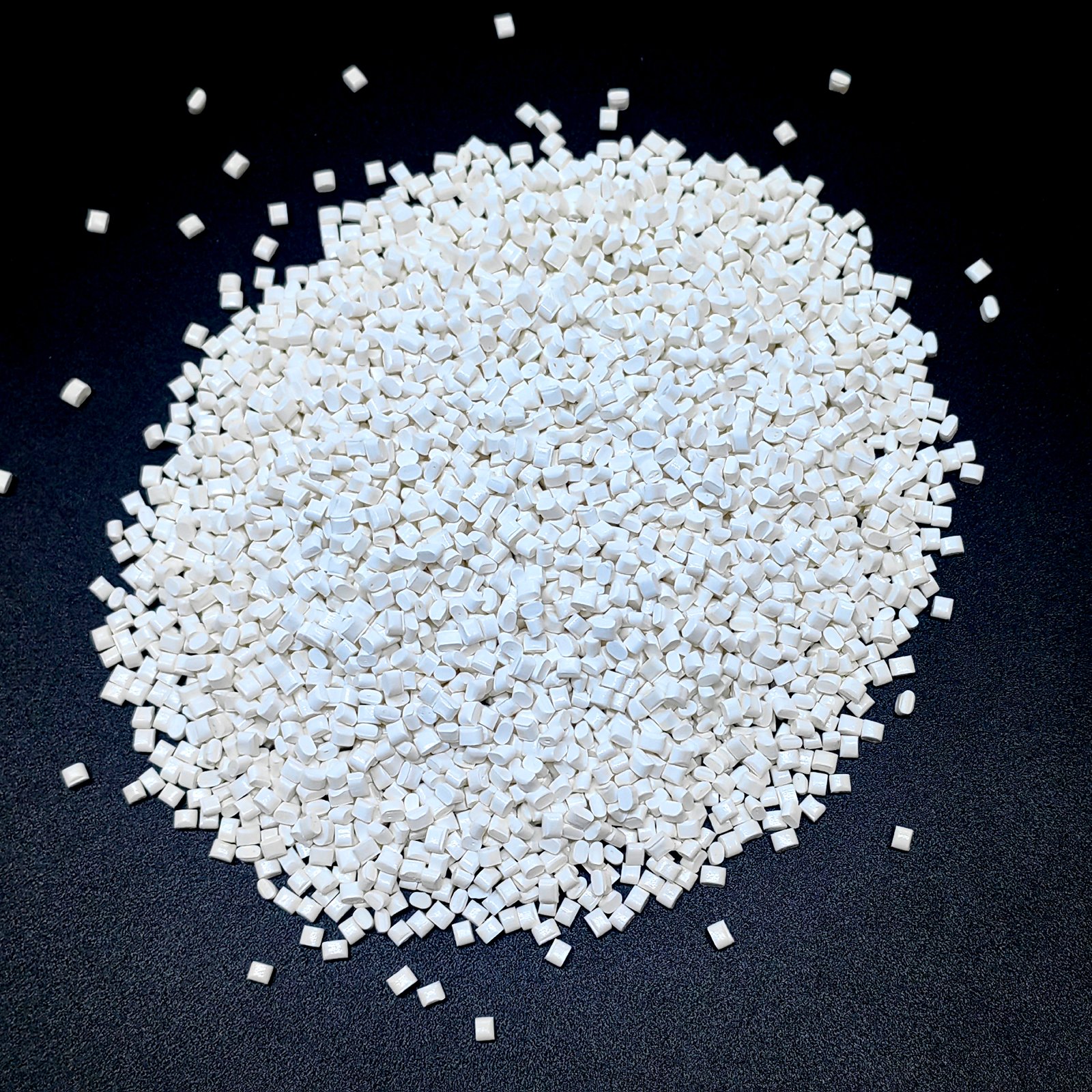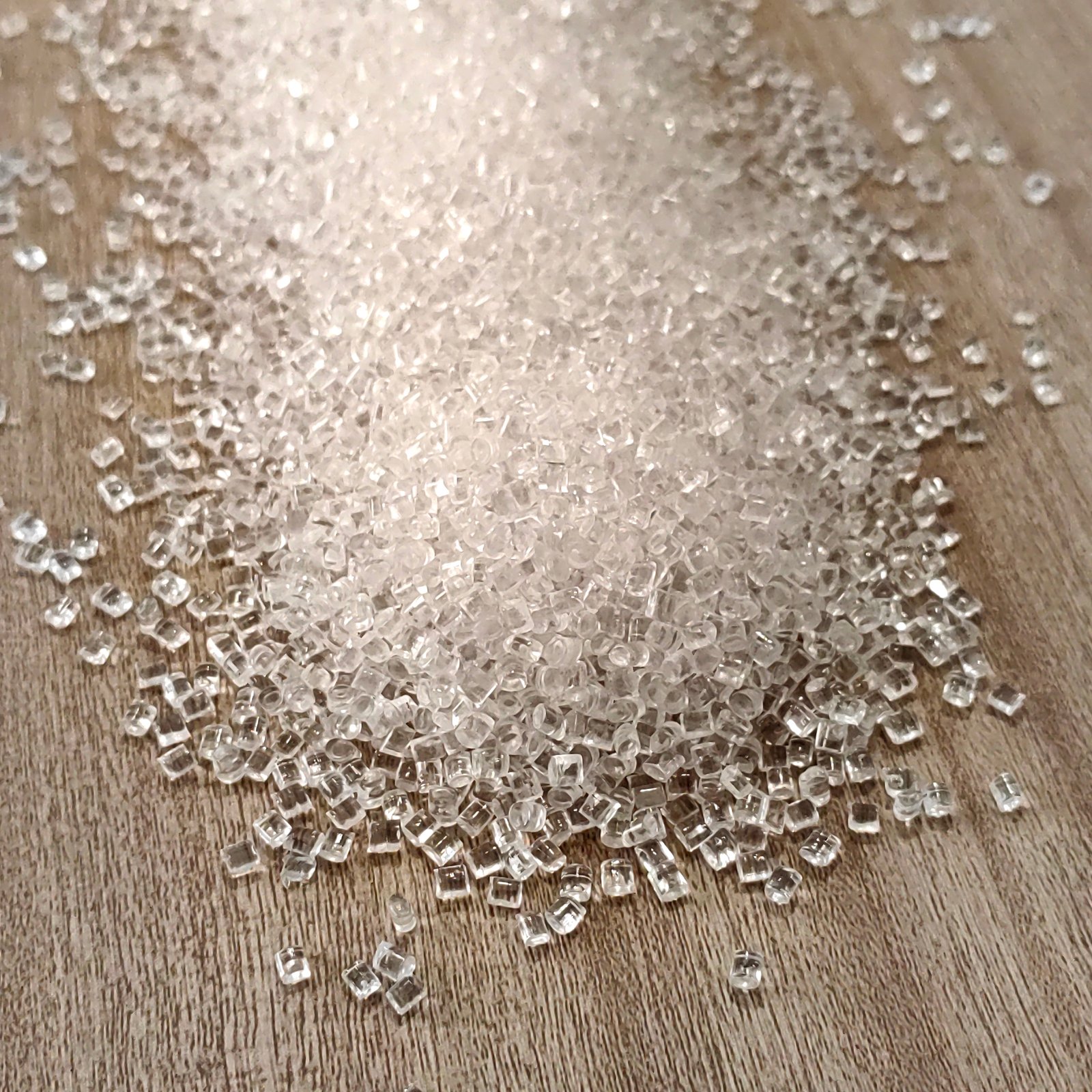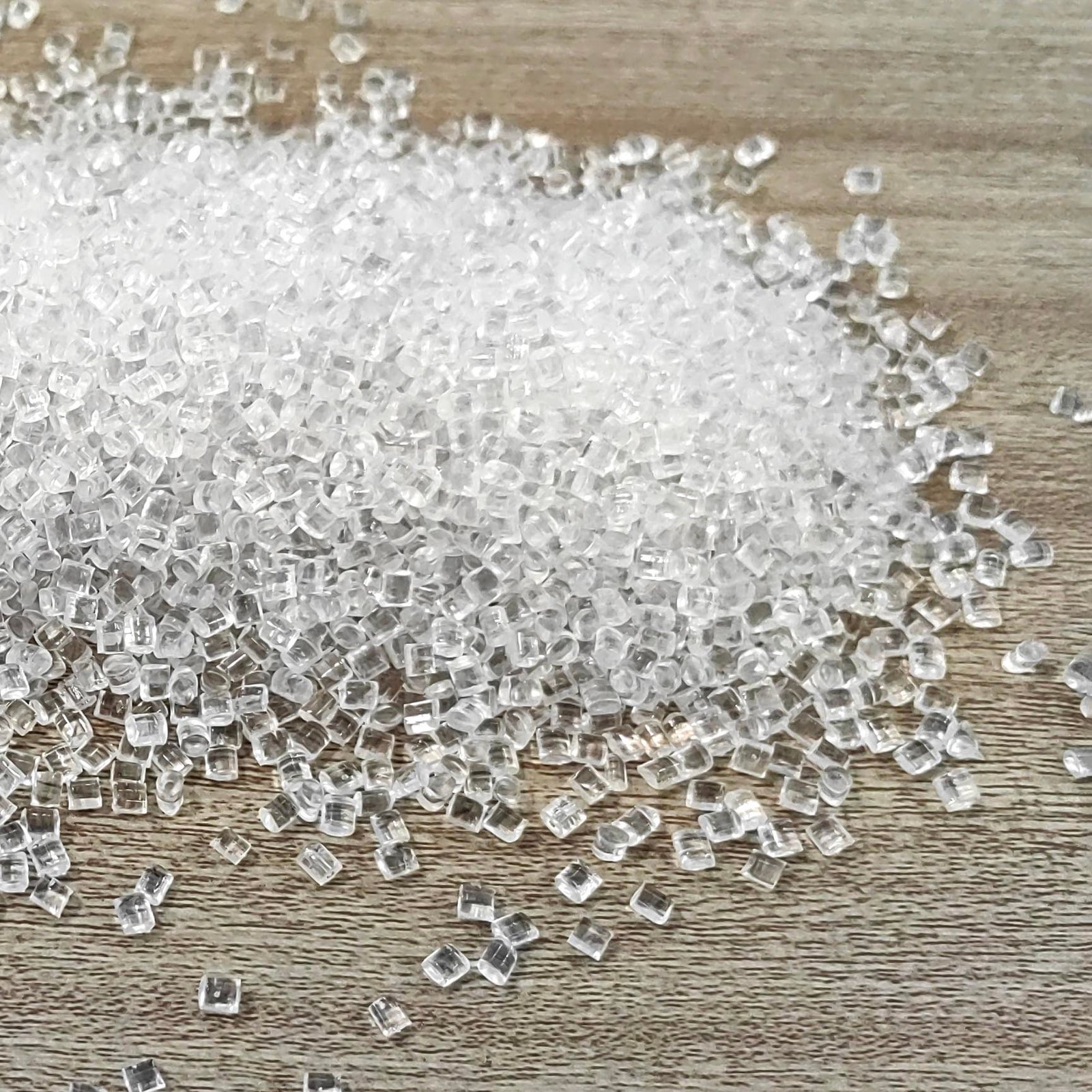PRODUCTS
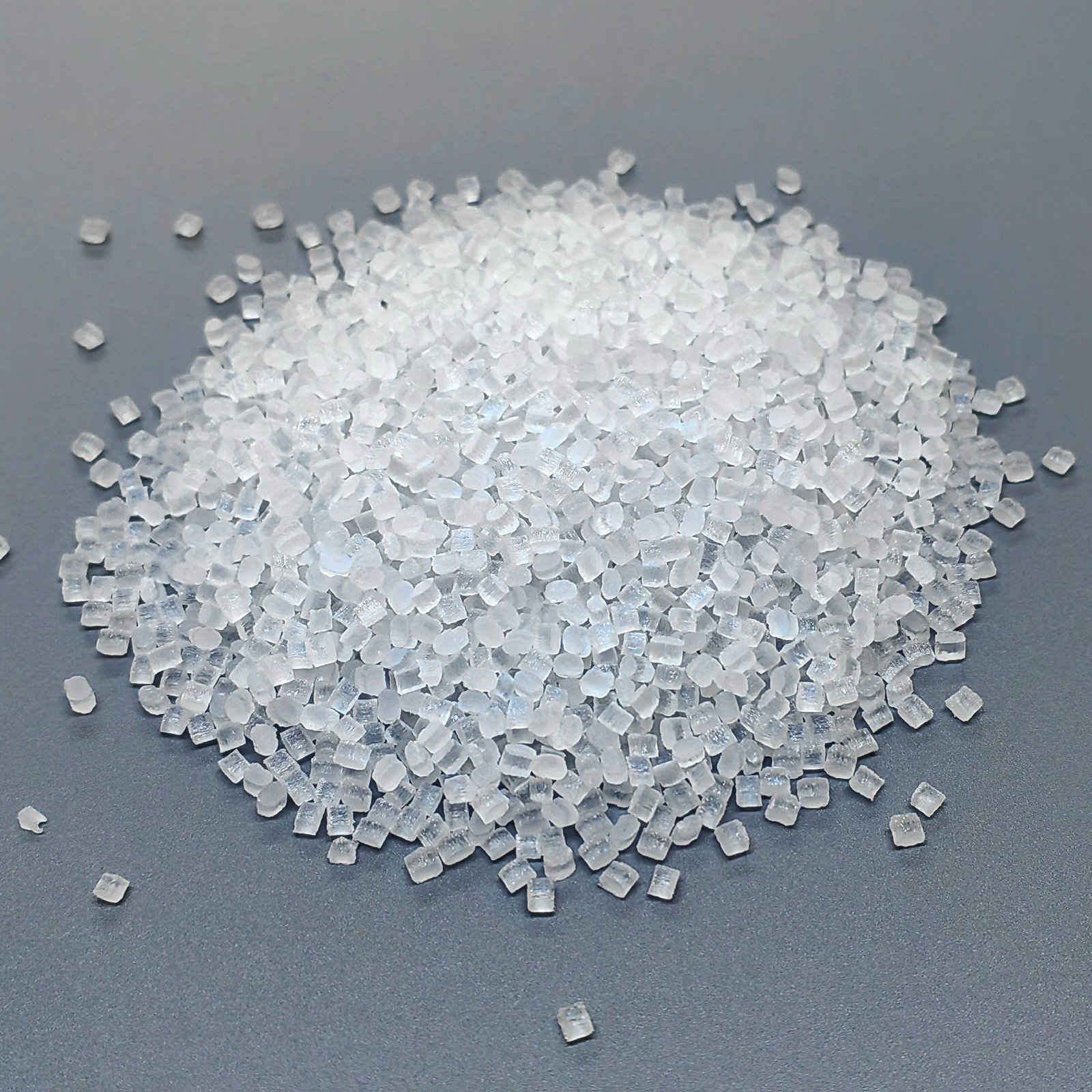

PC 2407 Polycarbonate Pellet | UV-Stable Transparent Injection
Product Struction
What are Polycarbonate Pellets
In the modern injection molding industry, polycarbonate pellets are widely used in household appliances, lighting, electronic shells and general industrial products due to their excellent optical properties, mechanical strength and processing adaptability. PC 2407, as a general-purpose PC grade under Covestro, has performed outstandingly in the mid-to-high-end injection molding market with its advantages such as low viscosity, UV resistance, and easy demolding.
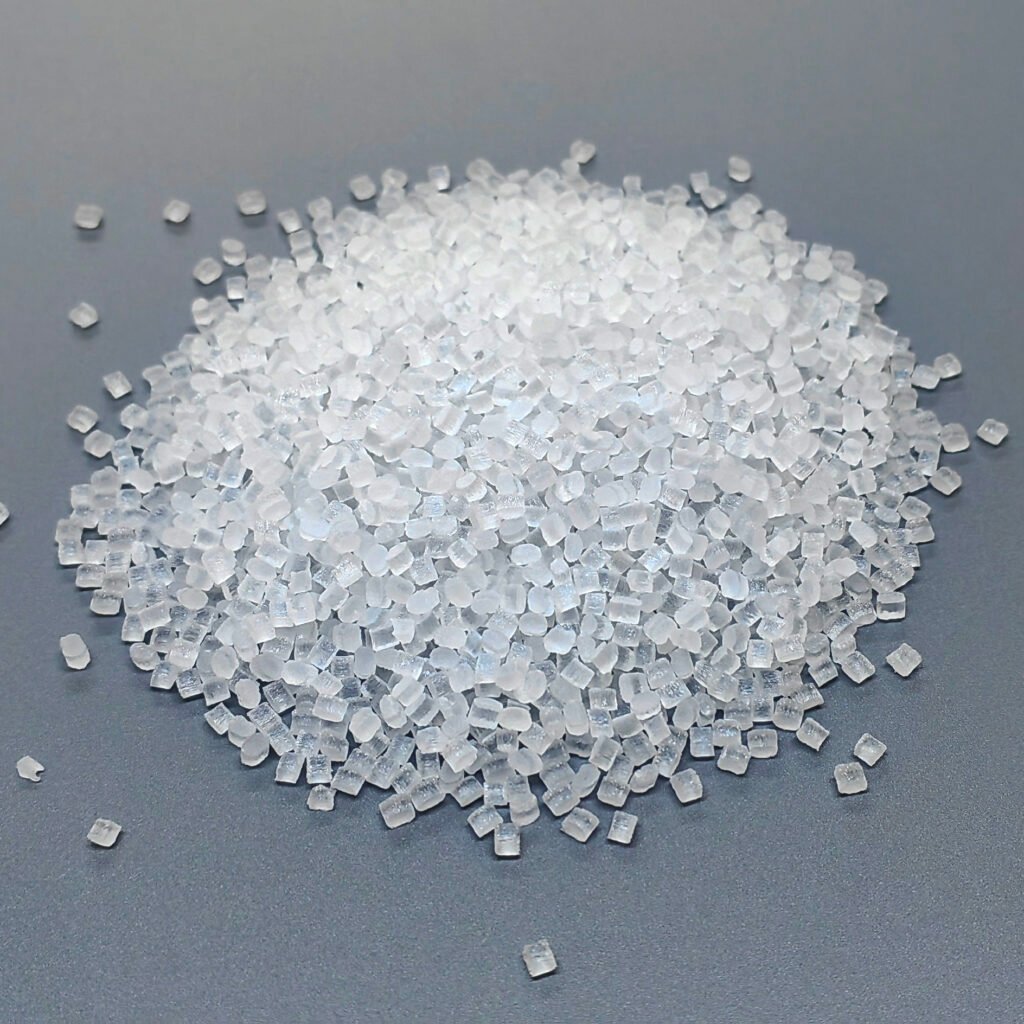
01 | Highlights of material properties
PC 2407 polycarbonate pellets are designed with performance that takes into account both molding fluidity and long-term weather resistance. The following are several core features:
・Good light transmittance: Under different thicknesses (1-4mm), the transmittance remains at 87%-89%, making it suitable for highly transparent components.
・UV stabilizer addition: The polycarbonate pellets has UV resistance, which can delay the yellowing and aging of products, and is suitable for outdoor or lampshade applications.
・Low viscosity and easy demolding: Reduce molding pressure and cycle, and improve injection molding efficiency;
・Excellent mechanical properties: Tensile strength, flexural strength and notched impact performance are balanced, which can meet structural requirements.
・Flame retardant performance compliance: 0.75mm meets UL94 V-2, 2.7mm meets HB, meeting the flame retardant requirements of most electronic and electrical appliances.
02 | Analysis of Application Fields
Due to its versatility and stability, PC 2407 polycarbonate pellets have been widely used in the following industries:
・Consumer electronics shells: mobile phone stands, smart speaker shells, earphone shells, etc.
・Lighting fixtures: LED lampshades, diffusers, light guides, etc.
・Medical equipment accessories: Non-implantable transparent structural components;
・Transparent components of household appliances: juicer covers, water dispenser window panels, control panels, etc.
・Industrial transparent parts: instrument covers, Windows, guards, etc.
Its excellent refractive index (1.584) and low haze (0.8%) make it particularly suitable for products with high optical requirements. Meanwhile, its low-temperature impact resistance (the impact value remains above 12 kJ/m² at -30℃) enhances its reliability in cold regions.
03 | Polycarbonate pellets data sheet
| Electrical properties | Condition | Standard | Value | Unit | |||
| CTI | Solution A | IEC 60112 | 250 | V | |||
| CTI | M Solution B | IEC 60112 | 125 | V | |||
| Dielectric | Strength 1.0mm | IEC 60243 | 34 | KV/mm | |||
| Dielectric | Constant 100Hz | IEC 60250 | 3.1 | ||||
| Dielectric | Constant 1MHz | IEC 60250 | 3.0 | ||||
| Dissipation | Factor 100Hz | IEC 60250 | 0.0005 | ||||
| Dissipation | Factor 1MHz | IEC 60250 | 0.009 | ||||
| Electrolytic | Corrosion | IEC 60426 | A1 | Rating | |||
| Surface | Resistivity | IEC 60093 | 1E+16 | Ω | |||
| Volume | Resistivity | IEC 60093 | 1E+14 | Ω.m | |||
| Flammability | Condition | Standard | Value | Unit | |||
| Burning | Rate >=1.0 mm | ISO 3795 | Passed | mm/min | |||
| Flame | Rating All Color 0.75mm | UL94 | V-2 | ||||
| Flame | Rating All Color 1.5~2.6mm | UL94 | V-2 | ||||
| Flame | Rating All Color 2.7mm | UL94 | HB | ||||
| Flame | Rating All Color 3.0mm | UL94 | HB | ||||
| Flame | Rating All Color 6.0mm | UL94 | HB | ||||
| GWFI | 0.75mm | IEC 60695 | 850 | °C | |||
| GWFI | 1.5mm | IEC 60695 | 875 | °C | |||
| GWFI | 3.0mm | IEC 60695 | 930 | °C | |||
| GWIT | 0.75mm | IEC 60695 | 875 | °C | |||
| GWIT | 1.0mm | IEC 60695 | 875 | °C | |||
| GWIT | 1.5mm | IEC 60695 | 875 | °C | |||
| GWIT | 3.0mm | IEC 60695 | 875 | °C | |||
| Limiting | Oxygen Index Method A | ISO 4589 | 27 | % | |||
| Hardness | Condition | Standard | Value | Unit | |||
| Ball | Indentation Hardness | ISO 2039 | 116 | N/mm² | |||
| Mechanical behavior | Condition | Standard | Value | Unit | |||
| Charpy | Notch Impact 23°C 3.0mm | ISO 179 | 65 | kJ/m² | |||
| Charpy | Notch Impact -30°C 3.0mm | ISO 179 | 14 | kJ/m² | |||
| Charpy | Un-notch Impact 23°C | ISO 179 | NB | kJ/m² | |||
| Charpy | Un-notch Impact -30°C | ISO 179 | NB | kJ/m² | |||
| Charpy | Un-notch Impact -60°C | ISO 179 | NB | kJ/m² | |||
| Elongation | Yield 50mm/min | ISO 527 | 6.0 | % | |||
| Elongation | Break 50mm/min | ISO 527 | 50 | % | |||
| Elongation | Break 50mm/min | ISO 527 | 120 | % | |||
| Flexural | Strength 2.0mm/min | ISO 178 | 98 | MPa | |||
| Flexural | Strength 3.5%Strain 2.0mm/min | ISO 178 | 74 | MPa | |||
| Flexural | Modulus 2.0mm/min | ISO 178 | 2350 | MPa | |||
| Flexural | Strain 2.0mm/min | ISO 178 | 7.0 | % | |||
| Izod | Notch Impact 23°C 3.0mm | ISO 180 | 65 | kJ/m² | |||
| Izod | Notch Impact -30°C 3.0mm | ISO 180 | 12 | kJ/m² | |||
| Puncture | Resistance Maximum Force 23°C | ISO 6603 | 5100 | N | |||
| Puncture | Resistance Maximum Force -30°C | ISO 6603 | 6000 | N | |||
| Puncture | Resistance 23°C | ISO 6603 | 55 | J | |||
| Puncture | Resistance -30°C | ISO 6603 | 65 | J | |||
| Tensile | Modulus 1.0mm/min | ISO 527 | 2400 | MPa | |||
| Tensile | Strength Yield 50mm/min | ISO 527 | 66 | MPa | |||
| Tensile | Strength Break 50mm/min | ISO 527 | 65 | MPa | |||
| Tensile | Creep Modulus 1hr | ISO 899 | 2200 | MPa | |||
| Tensile | Creep Modulus 1000hr | ISO 899 | 1900 | MPa | |||
| Optical performance | Condition | Standard | Value | Unit | |||
| Haze | 3000.00μm | ISO 14782 | 0.8 | % | |||
| Refractive | Index | ISO 489 | 1.584 | ||||
| Transmittance | 1000.00μm | ISO 13468 | 89 | % | |||
| Transmittance | 2000.00μm | ISO 13468 | 89 | % | |||
| Transmittance | 3000.00μm | ISO 13468 | 88 | % | |||
| Transmittance | 4000.00μm | ISO 13468 | 87 | % | |||
| Physical property | Condition | Standard | Value | Unit | |||
| Bulk | Density Pellets | ISO 60 | 660 | kg/m³ | |||
| Carbon | Dioxide Transmission 100μm | ISO 2556 | 4800 | cm³/(m²-24hr-bar) | |||
| Carbon | Dioxide Transmission 25.4μm | ISO 2556 | 18900 | cm³/(m²-24hr-bar) | |||
| Density | ISO 1183 | 1200 | kg/m³ | ||||
| Melt | Index 300°C 1.2kg | ISO 1133 | 19 | cm³/10min | |||
04 | Forming characteristics and processing advantages
Polycarbonate pellets PC 2407 has excellent injection molding adaptability and is particularly suitable for processing transparent parts with uniform wall thickness and high appearance requirements. Its melt fluidity is excellent, allowing for rapid mold filling under moderate injection pressure, which helps control surface defects such as flow marks and air streaks on the products.
In terms of mold design, priority should be given to:
・Cooling balance: Ensure that the transparent parts do not suffer optical distortion due to temperature differences;
・Demolding structure optimization: The material has been added with demolding agent. It is recommended that the mold slope and exhaust position be reasonably arranged to further shorten the molding cycle.
・Suitable for multi-chamber structure: Low viscosity helps ensure uniform injection in multi-chamber molds and is suitable for large-scale production.
For scenarios requiring high-speed production, PC 2407 can maintain good fluidity at temperatures below 120℃, and it also features dimensional stability and surface consistency, making it an ideal material choice for automated injection molding lines.
05 | Industry trends and material selection references
As the global trend towards environmental protection and durability continues to advance, the performance of polycarbonate pellets in terms of "long-lasting transparency" and "low VOC" has drawn increasing attention. PC 2407, with the addition of mold release agents and UV resistance, can reduce yellowing in the later stage while maintaining transparency, which is highly suitable for the demands of the smart home, automotive interior and lighting upgrade markets.
In addition, its stable air permeability and low water absorption rate also make it the preferred material for components in electronic structures that attach equal importance to sealing and optics.
06 | Recommendation of similar materials
If you have more application requirements for the performance direction of PC 2407 polycarbonate pellet, the following grades can be used as comparison and alternative options:
| Manufacturer | Product Model | Specific Gravity | Melt Index | Summary |
| Covestro | 2807 | 1200 kg/m³ | 9.0 cm³/10min | Viscosity: Medium Viscosity Flammability Rating: HB • V-2 Melt Index: 9.0 cm³/10min Notched Impact: 70 kJ/m² Heat Deflection Temp: 136 °C |
| Wanhua | A1073 | 1.2 g/cm³ | 7 g/10min | Viscosity: High Viscosity Flammability Rating: HB • V-2 Melt Index: 7 g/10min Notched Impact: 86 kJ/m² |
| Wanhua | A1225BK | 1.2 g/cm³ | 20 g/10min | Viscosity: Low Viscosity Flammability Rating: HB • V-2 Melt Index: 20 g/10min Notched Impact: 66.32 kJ/m² |
| Luxi Chemical | LXTY1609-11 | — | 11 g/10min | Melt Index: 11 g/10min Notched Impact: 64 kJ/m² |
Conclusion
For injection molding projects that pursue a balance between optical performance, processing efficiency and weather resistance stability, PC 2407 polycarbonate particles offer an economical and stable solution. When you are making a selection, please feel free to contact us at Juyuan for samples, data support and processing suggestions. We focus on the global supply of polycarbonate pellet and are committed to helping customers gain an edge in product structure and performance innovation.
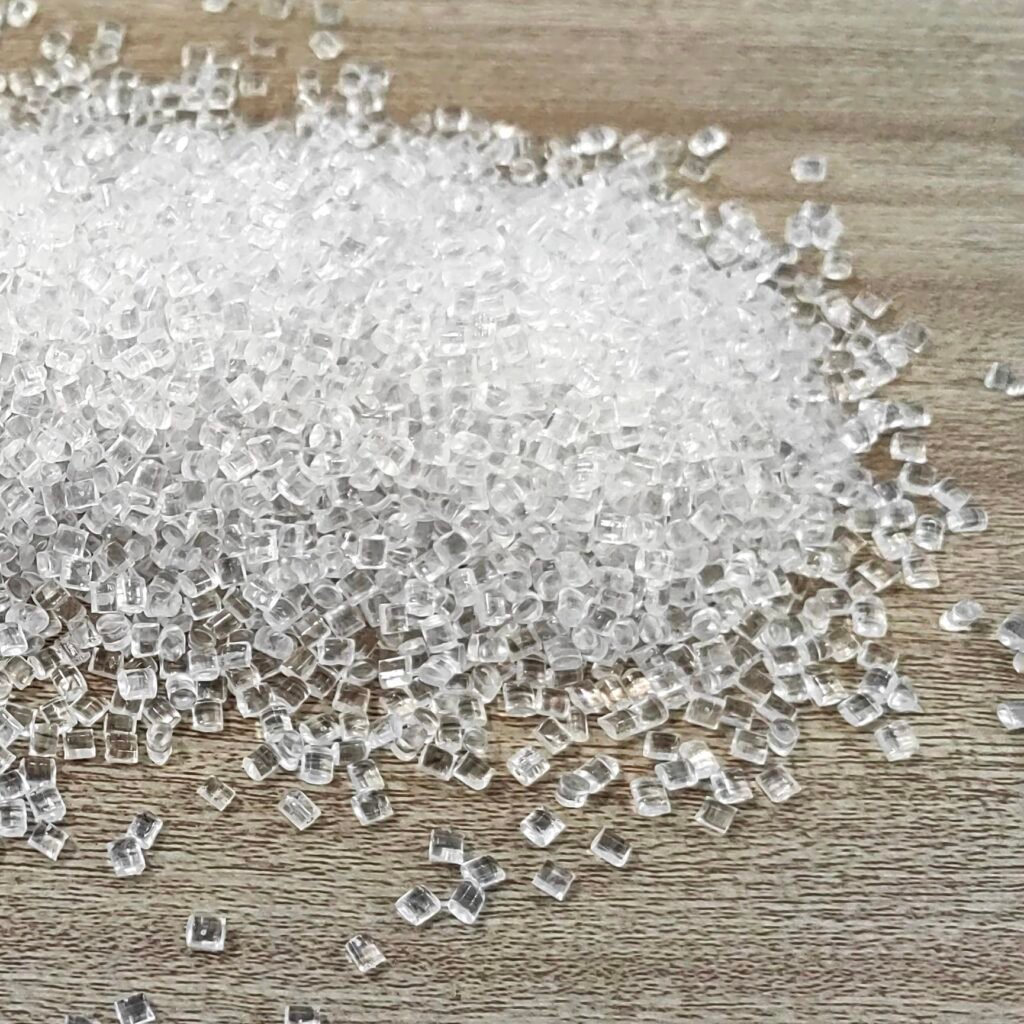
Polycarbonate Pellets
【Related Recommendations】
In-Depth Outlook on the Global Plastic Raw Materials Market: Strategic Sourcing Amid Market Volatility Learn more>
Makrolon® 6557: PC Material Solution for Precision Molding and Transparent Flame Retardancy Learn more>
PC S-3000VR: Injection-Grade Transparent PC with V-0 Flame Retardancy and Light Diffusion Learn more>

